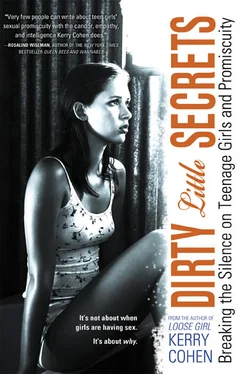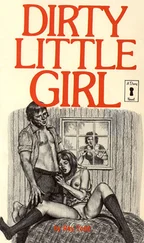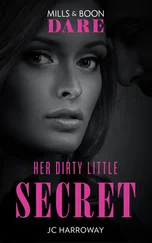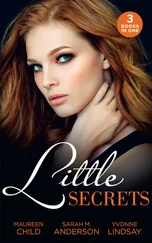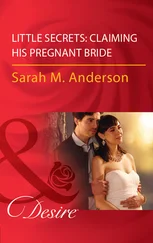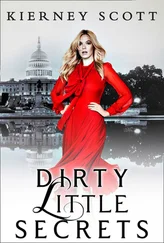As I alluded to briefly in the introduction, when adolescence hits, there is also a vast overproduction of brain cells and neuronal connections. It is during the early teen years that kids prune out the connections they don’t use. At the same time, their frontal lobes, which control judgment, logic, and organization, are not yet well developed. New teens have access to most emotions, but they don’t yet have the skills to deal effectively with them.
For girls, these developmental changes are particularly affected by what happens in the environments surrounding them, and most particularly in the ways they are sexualized by our culture. The images that control our understanding of girls are, in fact, so pervasive, such an ordinary part of our lives, that they are almost unseen. To even say that girls are sexualized in our culture verges on not saying anything at all.
Images of womanhood, of who we are supposed to be, are fed to us from infancy—go to any store that sells toys and there is a distinct “girls’ aisle” where everything is pink and tulle and satin. It doesn’t matter that there are also career-themed Barbies, or other dolls and playthings meant to encourage independence. The point is simply that everywhere a girl looks, from the moment she comes out of the womb, but then especially once she reaches adolescence, the media establishes clearly that it owns her sense of self.
What we speak of less, though, is how that wave of objectification and those mixed messages—“be sexy but not slutty”—are so strong that girls really don’t have a fighting chance. Magazines, billboards, commercials, Internet ads—these are just the tip of the iceberg. Take a quick glance at some of the top teen girls’ magazines and you see these headlines: “How to Get a Guy’s Attention,” “383 Ways to Look Hot,” “Look Pretty,” “How to Get Perfect Skin,” “Get Pretty Now,” and “Be Irresistible.” Girls see more than four hundred advertisements per day telling them how they should look. {19} 19 9. Committee on Communications, “Children, Adolescents, and Advertising,” Pediatrics 118, no. 6 (2006): 2563–2569.
The images are so pervasive that we barely notice them.
Naomi Wolf calls the sexy-but-not-slutty images “flattened beauty,” attractiveness defined by a cultural ideal that has nothing to do with girls’ organic, individual beauty. {20} 20 10. Naomi Wolf, The Beauty Myth: How Images of Beauty Are Used against Women (New York: Harper Collins, 2002).
Airbrushed bodies and flawless faces sit on the cover of every popular women’s magazine. The television runs a reel of size zeros and twos, of symmetrical faces and perfectly styled hairdos. Such people populate some of the most popular shows teenagers watch— iCarly , Gossip Girl , The Vampire Diaries , and Glee . Models, celebrities, and pop stars plaster advertisements, billboards, and screens. These people are all we see, which is a constant reminder to average-looking people that we are not that, but that we should certainly spend every moment trying to be that if we, too, want to be seen.
The most pervasive and scrupulous of these images, however, are the ones pertaining to sex and romance. Everywhere we look is a carefully designed suggestion of sexiness and the clear message that girls’ primary interest should be getting a boy’s attention through her looks. Open any teen magazine. Watch any commercial aimed at teen girls. She washes her face, wears a tampon, buys school supplies, and wears sneakers all in some sexy manner that reveals the intention of getting boys to notice her. And it starts way earlier than the teen years—just about every Disney princess plot revolves around snagging a man. The Little Mermaid is a perfect example. The main character Ariel doesn’t even speak, and then she gives up her entire identity as a mermaid and singer to get her guy. The meaning has been the same for decades: be available but not too available and, most important, get male attention at all costs. Girls have limited choices in how to respond to these messages. If they want social acceptance, though, the options vanish and there is really only one message left: “be sexy but not sexual.” The message is only made worse by the sheer number of outlets available to deliver it.
Even those images that seem to support independence and strength—ass-kicking girls like Buffy the Vampire Slayer and Veronica Mars, or self-contained girls like Bella’s character in the Twilight movies or Elena Gilbert on The Vampire Diaries —often maintain impossible standards of attractiveness. More important, they are almost always caught up in the process of trying to make a boy love them or of keeping a boy’s love. Bella, for instance, is painted as an everygirl. In the Twilight books she is not supposed to be anywhere near as attractive as the actress who plays her in the movies. But even in her ordinariness, a stunningly gorgeous vampire wants her and only her. He has eyes for no one else. Bella begins as a self-contained teenage girl who knows who she is and is not swayed by others’ opinions of her, but soon after Edward falls for her, her entire existence hinges on his love. Stephenie Meyer encourages a fantasy most all girls have: to be as plain as they are but to be adored and chosen by a really hot, really respectful guy.
Elena from The Vampire Diaries is exceedingly attractive, so it makes perfect sense that two hot vampire brothers spend much of their time trying to get with her. Although Elena’s character, like Bella’s, is supposed to be independent, not swayed by boys, the plot shifts soon enough so that her entire life depends on the love she shares with the brothers.
Yes, we’ve had shows like Ugly Betty , starring a more realistic looking female someone who didn’t have that “flattened beauty,” who didn’t spend all the episodes trying desperately to be loved. But the show was so unique in this way that the entire plotline had to involve the fact that she wasn’t our cultural ideal. The show’s name even called this very attractive woman “ugly”! And anyway, while viewers raved for one season, by the second season, they were over it, ratings fell, and the show was canceled. This disappearance is familiar. Darlene Conner from Roseanne and Angela Chase from My So-Called Life , also long gone, were strong, sarcastic characters who really didn’t care what you thought of them—but even then, cool, plain Angela spent pretty much all her on-screen time chasing Jared Leto’s character, who was, let’s face it, super good looking but equally vapid and dumb.
Recently, Lauren Zizes’s character on Glee gives new hope. Puck, the attractive, popular player, falls for her. First, the focus is on her large shape. He tells her he loves her curvy body, but, unimpressed, she says, “I look like what America looks like.” Finally he admits he likes most that she’s more of a badass than he is.
Even if we were to assume that a violent female, an “asskicking” female, equals a strong female, one study found that in films where females participated in violent action, 58 percent of those female characters were portrayed as submissive to the male lead and 42 percent were in romantic relationships with them. {21} 21 11. Katy Gilpatric. “Violent Female Action Characters in Contemporary American Cinema,” Sex Roles 62, nos. 11–12 (2010): 734–746.
So, even Lauren Zizes is guilty of this. (Her character still defies all expectations of what’s come before, and, hey, she’s on prime time, so I cannot feel disappointed.)
If our media has an obsession with romance and love, then it shows sexiness to girls as the way to get that romance. Generally, when we talk about girls in the media, people express outrage about excessively sexy images, which they argue lead to promiscuity. It’s true that sexual behavior and images of sex in our media have increased rapidly over the decades. Partially, this is simply because of increased tolerance for sexual imagery. Also, the modes of technology—places where we can see those images—have multiplied. But I would argue that our concerns about sexualization are mostly misguided. When given a bare-backed, tousled-hair photo of Miley Cyrus, only adults see a postcoital image. Kids generally don’t pick up on the subtleties of sex in images until they become more sexually experienced. Images alone don’t create promiscuity. The real problem is that girls see those images as their tickets to male attention and romance.
Читать дальше
